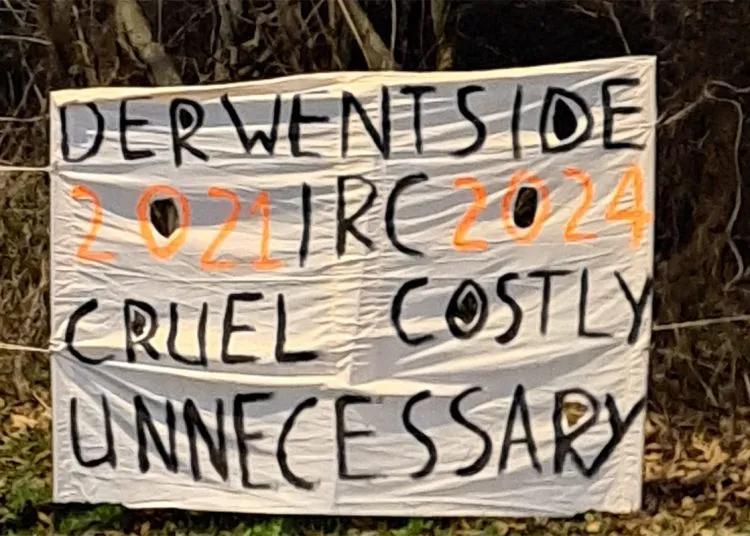Key Takeaways
- Unnecessary Detention Practices: The Derwentside Immigration Removal Centre detains women unnecessarily, with most being released on bail shortly after detention, raising serious questions about the purpose and humanity of the facility.
- Systemic Challenges: Its remote location, poor mobile and WiFi connectivity, and limited access to legal support exacerbate the challenges faced by detainees and undermine their ability to defend their cases effectively.
- Grassroots Advocacy: Weekly protests and interfaith vigils led by activists demonstrate a growing movement that unites communities in demanding the closure of the facility and reinvestment in local development.
When we talk about justice, we must also talk about its accessibility. For the women detained at Derwentside Immigration Removal Centre, justice seems a distant hope. Opened in November 2021 under then-Home Secretary Priti Patel, this facility has since become a focal point for criticism, protests, and questions about its role in the UK’s immigration system.
In my opinion, the fact that most detainees are released on bail shortly after their detention is the strongest argument against the centre’s necessity. If these women are not flight risks or threats, why are they being detained in the first place? This isn’t just a matter of logistics; it’s a glaring moral issue. Detention should never be used as a default mechanism, especially when its outcomes rarely justify the means.
But the problems with Derwentside go beyond the moral argument. Its remote location in Consett, far from the communities many detainees belong to, poses significant challenges. Women are transported overnight across the country, often hundreds of miles from their families and support networks. Imagine being forcibly moved to a place where even contacting a lawyer becomes a logistical nightmare due to patchy mobile signals and unreliable internet access. The government-appointed Independent Monitoring Board itself has raised questions about the centre’s viability, highlighting its inefficiencies and poor infrastructure.
Let’s not forget the economic argument. Activists, including groups like No to Hassockfield, have pointed out that the millions spent annually on this facility could be better used to boost local industries. Instead of isolating vulnerable women in what amounts to a legal limbo, those funds could provide meaningful support for both local economies and humanitarian efforts.
On the ground, the response to this injustice is inspiring. Weekly protests outside the centre, combined with faith vigils every first Sunday of the month, show the power of community action. These gatherings bring together people from diverse backgrounds and beliefs, united by a shared goal: the closure of Derwentside. Their message is clear — justice and humanity must take precedence over bureaucratic inertia.
Closing the Derwentside centre would not only save money but also send a message that the UK is serious about reforming its immigration system. Detention should be the exception, not the rule, and facilities like this only undermine public trust in the government’s ability to handle immigration fairly and efficiently.
In my view, this campaign represents a crucial battle in a broader fight for human rights. It’s not just about one centre; it’s about holding the system accountable and ensuring that compassion and practicality guide immigration policies. Derwentside might be a small facility, but the principles at stake are enormous.










